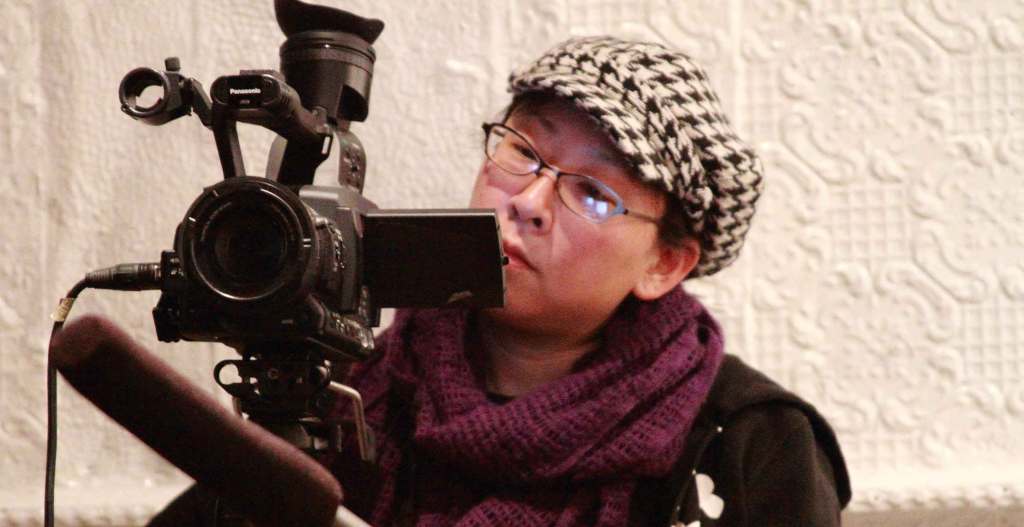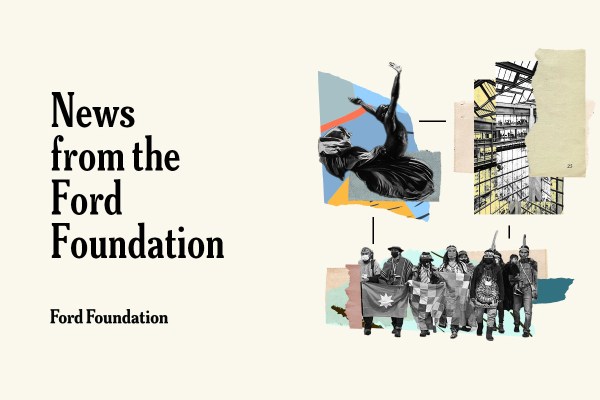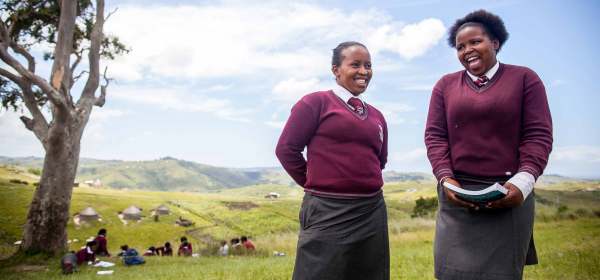 Flickr user UNIONDOCS
Flickr user UNIONDOCSRegardless of your political leanings, it’s clear that this election cycle was defined by stories—driven by strong characters and rooted in conflicting narratives. These stories shaped our understandings and influenced our choices; they persuaded some people and alienated others; they bound groups together and split communities apart.
In our own social justice work, we’ve learned that the most effective stories immerse people in emotion and experience. Advocates for equity, justice, and a healthier world have a wealth of stories to tell, ones that drive home the urgency of deep systemic problems and demonstrate how they affect people’s lives. Visual mediums can be particularly powerful in shifting and shaping narratives that advance social justice. Through visual stories—a series of photos, an online video, a long-form documentary, or even an illustrated fictional journey—change makers can communicate for impact and lay out a compelling vision that leads to real change.
We have new digital storytelling tools at our disposal—now we need to understand what it will take to use this new media and technology to tell stories that are truly transformational.
Ask and listen: The foundation for powerful visual storytelling
Over the past two years, the Ford Foundation has partnered with our organizations, the Culture Lab and Race Forward, on the Visual Storytelling for Social Change pilot program. Our goal: to improve the ability of social justice advocates and activists to connect the art of storytelling to the act of social change.
Together, we uncovered the importance of treating storytelling not simply as a campaign tactic for reach and impact but as a strategy that starts with asking questions. Organizers understand this in their bones; after all, their work is rooted in listening to and connecting with people, building partnerships with allies, and designing strategies that seek to engage and move people—all skills that are essential to the process of designing and developing stories.
To capture and spread these lessons far and wide, we developed a set of easy-to-use tools to help social change and media makers design their visual stories—and the following set of questions that people working for social change should ask before they start a new project. Note that while these resources and questions were created specifically with visual storytelling in mind, they might be helpful in telling stories in a range of mediums—whether primarily visual, audio, text, or otherwise.
What to ask before you start a storytelling project
1. Why tell this story?
When starting a visual narrative project, ask: Why is this story important to tell? What do I hope to accomplish? Root your storytelling aims within your organizational and narrative goals. For social justice storytelling to be successful—to expand audiences, get noticed, and win victories—it’s important to match story to strategy. But while maintaining a clear vision of what you hope to accomplish, allow your team the flexibility to get creative and discover unexpected approaches and ideas.
As you work, one helpful resource is Harnessing Documentaries for Social Change, a guide for organizers and advocates seeking to partner with documentary filmmakers and use visual journalism to advance change and increase impact. It offers a compendium of strategies and tactics to build campaigns, engage audiences, and shift narratives by using visual stories. It also offers insights into how to work with media makers and provides steps for building campaigns around visual stories.
2. Whom am I telling the story for?
When groups come to us with story ideas, the first thing we ask is always “Who is your audience?” A common answer: “Everyone.” But audiences are not one-size-fits-all. They have specific interests, identities, and needs.
Using your goals and values as a guide, it is important to discover and define at the beginning of the story design process as specifically as possible whom you are trying to reach, whether it is your core audiences—the people you already are connected with—or your “reach” audiences: the people you want to connect with. It might be a combination of the two.
But even that is only half the equation. You also have to know your audiences—their passions, fears, influences, and daily routines—to guide your creative story development and engagement strategy. To help, we’re experimenting with Know Your Audience, a visualization tool to provide easy ways for social change story makers to reflect and define audiences.
Ask yourself: What kind of story will resonate with my audience—fiction or nonfiction? Are my desired audiences Snapchat junkies or more likely to see content on their Facebook feed? What brings them joy? What scares them? What moves them to action?
3. Whom should I collaborate with to tell this story?
If you are looking to hone and build expertise within your organization, then it’s important to find and invest in the people who have the passion, talent, and drive to be part of the storytelling process. But if your organization’s storytelling expertise is not based internally, it is important to build relationships and partnerships with outside media makers—whether that means co-producing content or working together on distribution and impact campaigns.
The challenge is that advocates and media makers don’t always intuitively understand each other’s core motivations, goals, and language. That’s why we created the Build Your Creative Team matchmaking tool for advocates and artists. Use it as part of “getting to know you” conversations, as well as for designing specific story projects and partnerships.
4. How should I tell this story? What format should I use?
If we had a buck for every time a group came to us with an idea for an online video, we’d have enough money to produce this article as an extravagant music video. Sure, online videos have advantages—they can, for example, distill a lot of information and a range of perspectives into a short, shareable package. Less often discussed are their drawbacks, such as that these videos can require large production budgets—and, since they are not easy to excerpt or update, they may not have a long shelf life to justify the cost.
In our 24/7, multiplatform media environment, the array of storytelling formats we have to choose from—a bite-size 30-second mobile video, an expansive documentary, or even virtual reality—is both an opportunity and a challenge. Each format has its own advantages and shortcomings, required skills, and evaluation metrics. So before you decide that an “online video” is what your organization needs, check out our tool Choose Your Creative Path. We designed it to help social change groups quickly learn about, compare, and choose from seven different visual storytelling formats, from photo series to virtual reality.
5. How will I craft the story?
Stories need four basic things: characters, a setting, action, and an idea.
Strong characters allow us to present people with complexity and encourage empathy. Who is your protagonist? Your antagonist? Have you considered the concept of a contagonist — who might be on the main character’s side but have different ideas about how he or she should achieve his or her goal? What stereotypes can you break? Are all the women in your story victims, all the men heroes? Where is the story happening, and what does this setting reveal about the characters and the stakes of the story?
Conflict and action drive stories. When we are making stories, it’s critical to ask ourselves: Has enough happened to keep my audience interested until the end? What archetypes am I working with? (Think: overcoming monsters, setting out on a quest, exposing a secret.) All the decisions you make in crafting the story will lead your audience to the big idea, which is sometimes also known as the moral of the story.
Harnessing the power of stories
As neuroscientist Paul Zak has explained, “Stories are powerful because they transport us into other people’s worlds, but, in doing that, they change the way our brains work and potentially change our brain chemistry—and that’s what it means to be a social creature.” It’s clear that stories have incredible potential, but it is only in our being thoughtful about how we’re creating and telling them, why, and for whom, that they can have their greatest impact. Let’s get to work.
Rinku Sen is president and executive director of Race Forward: The Center for Racial Justice Innovation. Tracy Van Slyke is director of The Culture Lab at Citizen Engagement Lab.



